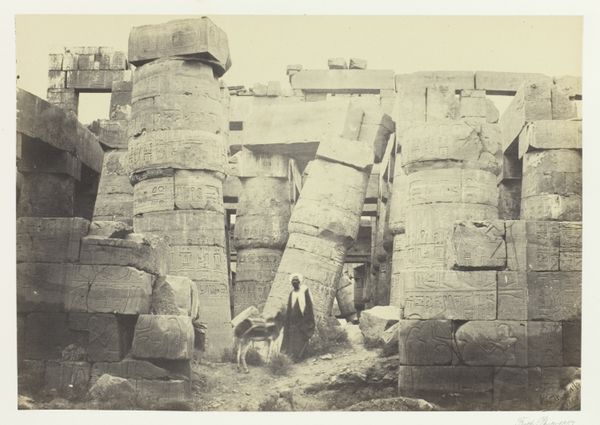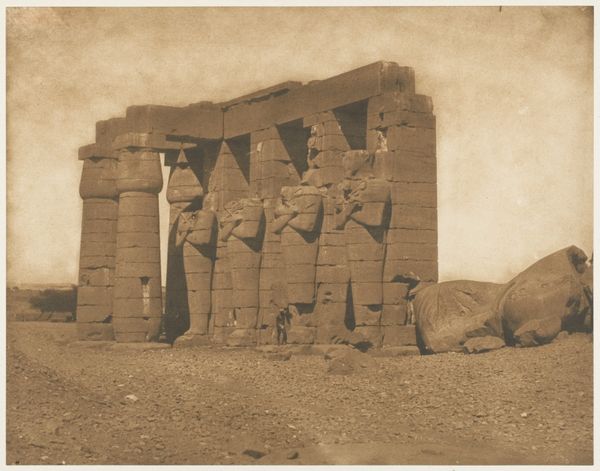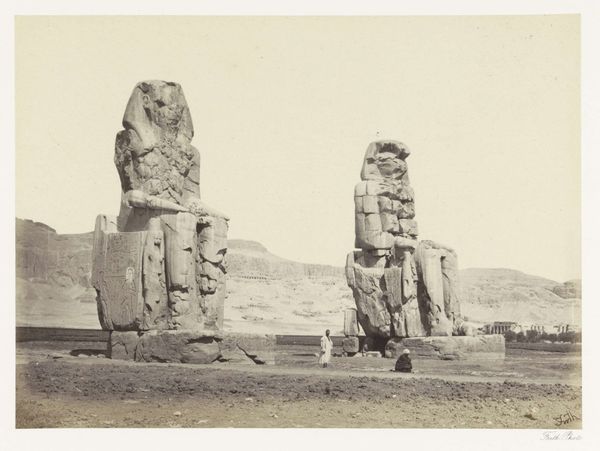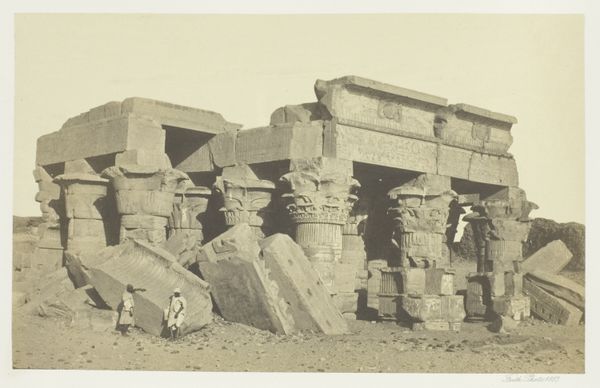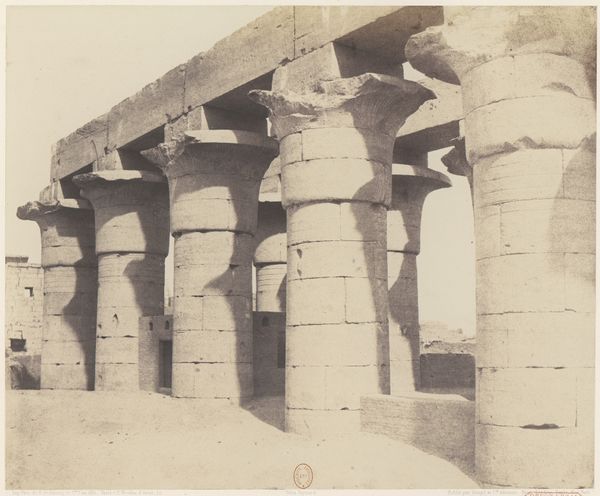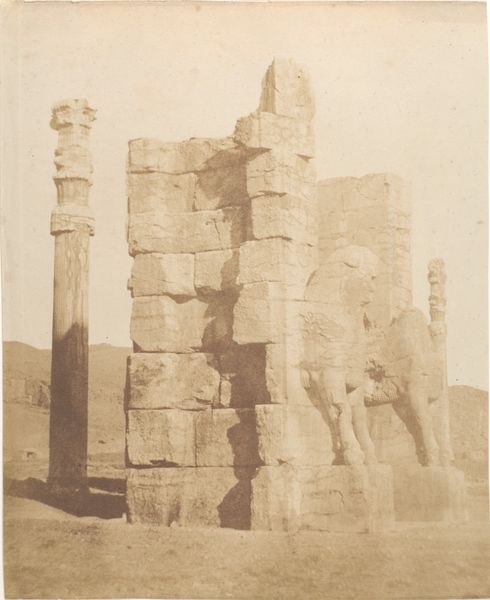
Osirispijlers en de kolos van Ramses II van het Ramesseum aan de Nijl before 1862
0:00
0:00
francisfrith
Rijksmuseum
photography, albumen-print
#
landscape
#
ancient-egyptian-art
#
photography
#
ancient-mediterranean
#
history-painting
#
albumen-print
Dimensions: height 158 mm, width 225 mm
Copyright: Rijks Museum: Open Domain
Francis Frith captured this image of the Osirispillars and the fallen colossus of Ramses II at the Ramesseum, along the Nile. The Osirispillars, statues of the pharaoh depicted as the god Osiris, symbolize rebirth and the eternal cycle of life. Note how the pharaoh’s arms are crossed over his chest, holding the crook and flail, emblems of divine authority. This pose is not unique; we see echoes of it in funerary art across cultures, reflecting a universal desire for immortality. Yet, here lies Ramses’ shattered colossus. Once a symbol of power, it now lies broken, a poignant reminder of the transience of earthly power. The image of a fallen leader is a powerful one. It evokes feelings of mortality, loss, and the inevitable decay of all things. Such motifs tap into our collective memory, resurfacing in various forms throughout history. Just as empires rise and fall, so too do symbols evolve, their meanings reshaped by time and circumstance. Frith’s photograph invites us to reflect on the cyclical nature of history, where symbols of power are destined to crumble.
Comments
No comments
Be the first to comment and join the conversation on the ultimate creative platform.

